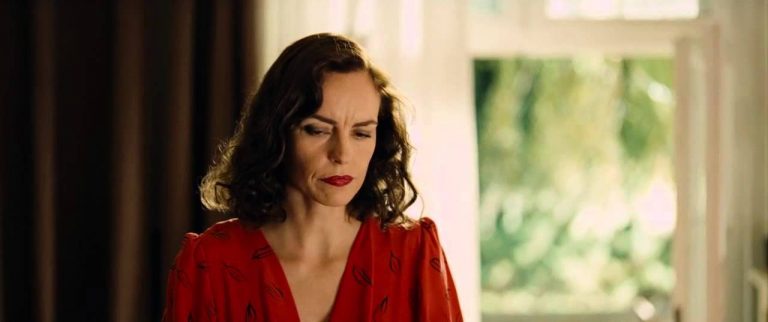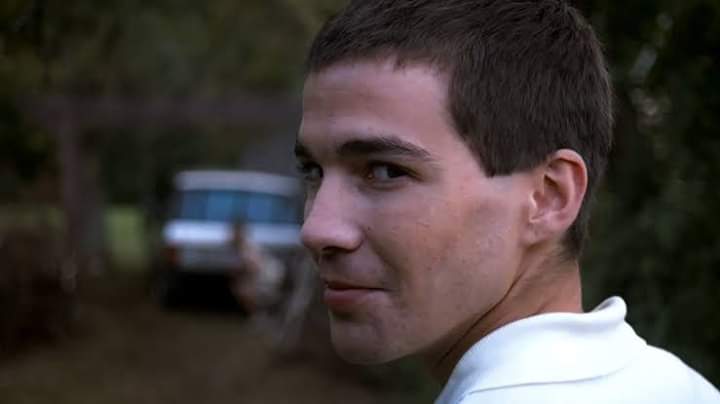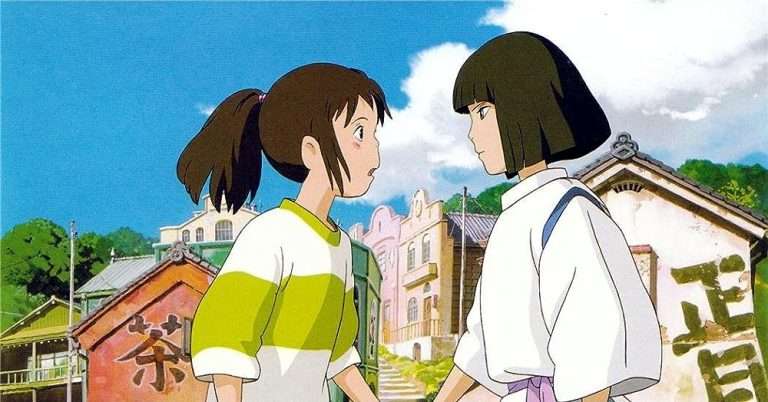Tarkovsky’s Fusion of Style and Substance: In my never-ending quest to explore and unravel the intricacies of world cinema, I stumbled upon Jean-Luc Godard’s “Vivre sa vie” (1962). As the credits rolled, I found myself in a state of bewildered contemplation. What had I just witnessed? I was at a loss for words, unable to articulate praise or criticism. However, after delving into extensive research, I unearthed the significance of French culture’s individualistic tendencies, particularly during that era.
This newfound awareness transformed my perception of the protagonist’s journey and emotional state in “Vivre sa vie,” leaving me captivated by the idea of unraveling the ideologies and perspectives inherent to filmmakers’ cultural backgrounds. Taking a break from French cinema, I ventured into the realm of Andrei Tarkovsky. Now, there’s a little story behind my direct choice of Tarkovsky’s works.
A few years ago, I randomly came across “Offret” (The Sacrifice, 1986) and was drawn to its intriguing plot. However, during my initial viewing, I struggled to endure the deliberately slow pace, which felt unlike anything I had encountered before. Mind you, I adore dramas with well-crafted writing, particularly Aaron Sorkin’s masterful dialogue. I was an unabashed Sorkin nerd at that time, although I won’t readily admit it nowadays.
Nonetheless, a year passed, and I couldn’t ignore the incessant praise “Offret” received on Reddit, nor could I overlook the reverence Tarkovsky commanded from some of my most respected Indian filmmakers. Thus, I decided to give it another shot. Unfortunately, I could only endure a mere ten additional minutes before I reluctantly abandoned the film, feeling a deep sense of disconnection. I attributed this to the challenges of translation and moved on.
However, armed with a newfound appreciation for and understanding of “Vivre sa vie,” I believed I had matured enough to navigate Tarkovsky’s enigmatic world. Seeking a different experience, I opted for “Stalker” (1979), and my impressions went beyond mere admiration. I must say, I was utterly awestruck! In fact, I hold Tarkovsky in such high regard that I consider him one of the greatest cinematic visionaries of all time, ranking among the top three directors in my personal pantheon. What caused such a drastic change in my perspective? The answer lies in my comprehension of art itself, not just art in general, but Tarkovsky’s distinct artistic vision and how he perceives it.
To simplify matters, the plot of “Stalker” (as per IMDb) revolves around a guide leading two men through a mysterious territory known as the Zone in search of a room that grants wishes. Sounds intriguing, doesn’t it? However, what proves utterly mind-boggling (and somewhat disheartening) is that after investing over two hours in the film, these characters ultimately decide not to enter the Zone and return from whence they came! It may seem anticlimactic at first glance, but trust me when I say it is nothing short of perfection.
The narrative of “Stalker” follows two men, a professor, and a writer, as they are guided by a stalker (a term denoting guides of the Zone) through an abandoned city brimming with lush greenery but devoid of civilization. While we are not granted extensive information about these characters, fragments of their personalities and histories emerge through sporadic revelations shared during their journey toward the Zone.
During one particular interaction, the professor curiously inquired about the writer’s craft, to which the writer casually responded with a simple word, “Nothing.” As their conversation unfolded, time slipped away, leaving us with insufficient moments to realize that the writer might have been alluding to none other than Gustave Flaubert, the 17th-century French novelist. In letters penned to his lover and Paul Lewis in January 1852, Flaubert divulged his aspirations to create a book centered around the concept of nothingness.
He envisioned a literary work that eschewed reliance on external elements, instead deriving its essence solely from the potency of its style, akin to our planet suspended within the vast expanse of emptiness. This book would possess an almost imperceptible subject matter or, at the very least, an exceedingly subtle one. Flaubert firmly believed that the most exceptional works were those with minimal content, where expression harmoniously melded with and seamlessly embodied style.
I believe this notion represents the future of art. From the perspective of pure art, one could almost establish the axiom that there is no such thing as a subject. The style itself is an absolute manner of perceiving things. ~ Andrei Tarkovsky
Upon careful examination of Tarkovsky’s filmography, it becomes evident that he wholeheartedly realized this notion, most notably in “Stalker,” where he ultimately achieved his vision. Yet, one may wonder, how can a book or a film revolve around the concept of nothingness? And if style serves as the true essence of perception, why does the phrase “style over substance” even exist?
I am only interested in the views of two people: one is called Bresson, and one is called Bergman. ~ Andrei Tarkovsky
If we perceive style and substance as distinct entities, we must acknowledge that their purpose lies in complementing one another. According to Tarkovsky, a film loses its essence when it succumbs to the technical demands of the narrative. This is precisely why “Solaris,” being a science fiction film, stands as his least favored among his own works. He urged the Strugatsky brothers to repeatedly revise the screenplay of “Stalker” until they eliminated any remnants of science fiction from its core. It is not merely the genre that Tarkovsky regards as external; he also questions the commercial nature of cinema.

We may ponder what makes a film marketable, and while there are numerous elements we could incorporate to ensure its success, in doing so, are we not introducing external factors? Some argue that films should be crafted following the audience’s demands. However, when faced with this prevalent argument within the industry, Tarkovsky expressed his frustration, emphasizing that he only concerns himself with two audiences in the entire world: Bresson and Bergman.
In the thought-provoking Chapter 6, masterfully titled “The Author in Search of an Audience,” within his seminal work “Sculpting in Time,” Tarkovsky delves into the intricate relationship between artists and their intended viewers. According to Tarkovsky, the artist’s unique perspective, no matter how complex or rarefied, is destined to resonate with an audience, even if that audience is small in number. This symbiotic connection between artist and audience is rooted in a profound alignment that transcends mere popularity or commercial appeal.
However, a fascinating question arises: Is it reasonable to assert that audiences are unaware of their desires until those desires are presented to them? While there is nothing inherently amiss in deriving enjoyment from mainstream blockbusters, the contemporary landscape raises concerns. The mass audience has fallen prey to a business model that masquerades as catering to their supposed demands. One may wonder whether audiences genuinely understand what they truly want or require a metaphorical “Zone” — a space of profound exploration and self-discovery — to unlock their latent desires and preferences.
Let us approach this matter pragmatically. There is no denying that watching a Tarkovsky film can be a formidable undertaking, as my own failed attempts attest to. His movies not only boast considerable running times, but individual shots themselves are markedly more protracted than what we are accustomed to. Take, for instance, a sequence in which the Stalker leads the two men on a journey from their city to the city where the enigmatic Zone is located. They embark on a railway work car, and the entire travel sequence spans three and a half minutes, devoid of dialogue, with the trio simply seated on the car, steadily moving forward. Adopting a pessimistic viewpoint, one might perceive it as uneventful. However, this is precisely where Tarkovsky’s style comes to the fore and substance emerges.
If the regular length of a shot is increased, one becomes bored, but if you keep on making it longer, it piques your interest, and if you make it even longer, a new quality emerges, a special intensity of attention. ~ Andrei Tarkovsky
Tarkovsky argues that if the duration of a shot is extended beyond the norm, it initially incites boredom. Yet, as it continues to lengthen, it captures our interest, and with further elongation, a new quality emerges. Naturally, engaging with the film “Stalker” demands a substantial level of attentiveness. If one is willing to look beyond superficiality, it poses a question: What lies beneath the surface? Amid our distracting reality, it requires a leap of faith to embark on such a cinematic journey. For, whether one believes it or not, Tarkovsky seeks to reveal the truth, akin to the Stalker himself, who guides individuals into the Zone with the hope that they will uncover their own truths.
Tarkovsky’s profound message is encapsulated in the idea of the Zone, which leads us to a capital T representing truth. In Tarkovsky’s view, truth is not a static entity; its essence lies in the method of its expression. The paramount quest is to find meaning within the framework of time, an arduous endeavor that may exact decades of mental activity. Can we then embrace cinema’s subtle temporal shifts, where decades can pass in mere seconds? Can we embrace Tarkovsky’s cinematic realm, where a minute can stretch into an hour?
Here, we witness the unity of time, space, and action without the need for a fourth-dimensional construct to comprehend the spatial nature of time. Tarkovsky harnesses time as a tangible element, infusing it with a pre-narrative density. Suddenly, we are immersed in the inertia and drabness of time itself as it transcends its role as a mere backdrop and becomes palpable and weighty. We experience time’s passing not through explicit time lapses but through the unfolding actions within a series of spaces. Each frame pulsates with the coexistence of time, space, and action, with the transitions serving as a seamless continuation of the narrative flow.
There is no rupture in time; instead, time becomes the fabric from which drama evolves. The intention is to reveal the unseen, presenting a new world where established artistic boundaries are shattered. Style and substance merge into a singular entity within this realm, where style becomes substance itself. It requires no external support, not even traditional film grammar, as Tarkovsky dares to challenge conventional norms and approaches, embracing unconventional angles and defying the expectations of typical scene portrayals.
Stalker is a tragedy, but the tragedy is not hopeless. Tragedy cleanses man. I believe that only through spiritual crisis does healing begin. In this film, I wanted to make a complete statement: namely that human love alone is — miraculously — proof against the blunt assertion that there is no hope for the world. This is our common and incontrovertibly positive possession — that essentially human thing that cannot be dissolved or broken down, that forms like a crystal in the soul of each of us, which is all a person can count upon his existence. ~ Andrei Tarkovsky
In the enigmatic realm of Andrei Tarkovsky’s films, truth is an elusive yet palpable presence embodied by the mysterious Zone. As we journey through the intricacies of time, space, and action, Tarkovsky’s deliberate and prolonged shots envelop us in an immersive experience like no other. His audacious disregard for traditional narrative structures and willingness to challenge the confines of cinematic conventions transport us to a realm where the boundaries between style and substance dissolve.
In Tarkovsky’s universe, the very essence of cinema is redefined, transcending the limitations of external influences and relying solely on the power of his artistic vision. With every frame, he unravels the unseen and presents us with a new world where the wonders of cinema unfold in their purest form. Through his audacious pursuit of truth and the fusion of style and substance, Tarkovsky cements his place among the great cinematic visionaries, leaving an indelible mark on the art form itself.




![Lookback at Bresson: A Man Escaped [1956]](https://79468c92.delivery.rocketcdn.me/wp-content/uploads/2019/07/A-Man-Escaped-highonfilms-768x576.jpg)

![[Watch] The Unexpected Popularity of RRR in the West Explained](https://79468c92.delivery.rocketcdn.me/wp-content/uploads/2022/12/The-Unexpected-Popularity-of-RRR-Explained-768x432.jpeg)
